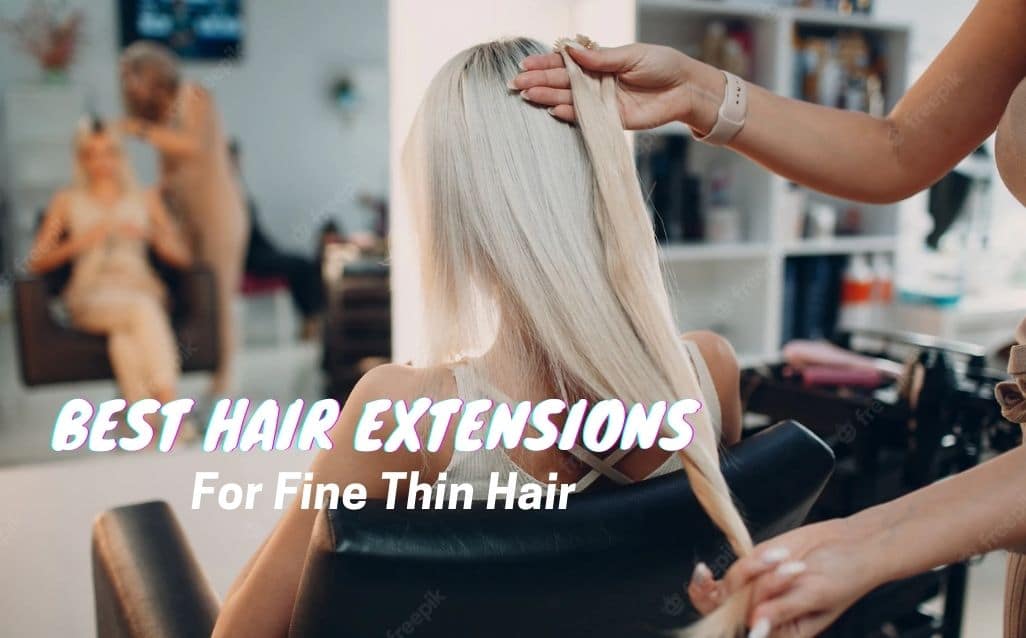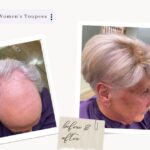Offering hair replacement systems or hair extension services can allow you to level up your business or turns your salon into a luxury service.
The secret to choosing the right hairpieces for your busienss is in the details, with the type of hair you use being no exception. There are three popular options to choose from – European, Indian, and Chinese hair.
One of the most common questions that we get from customers is What are different types of hair, and what are the differences between European hair vs. Indian Hair vs. Chinese Hair?
This guide exists to answer all those questions and more, helping you decide which style to choose for your hair replacement system.
The hair type that you use for your hair extensions or toupee is one of the most important decisions that you’ll make. It will help determine your product’s quality and price point, making it an integral part of the finished hair system. Not all hair types are made equal.
As there is no one-size-fits-all approach, it’s good to know your options. At New Times Hair International, we have over 10 years of experience producing high-quality human hair replacement products. As an industry leader in hair replacement systems, we’re sharing our knowledge on the difference between European hair vs. Indian hair vs. Chinese hair. When designing your hair systems, the hair type is one of the first decisions you must make.
Related: What is the Difference Between Synthetic Hair and Human Hair?
Related: Virgin Hair vs. Remy Hair vs. Non-Remy Hair: What are the Differences?
Why Should You Use Human Hair for Your Product?
The first question that every salon and store has to answer is which hair type they wish to use. Before we jump into the characteristics of European Hair vs. Indian hair, it’s worth going back to basics.
Hair manufacturers can choose between two options – human hair or synthetic hair. Most of the wigs you’ll find are made using synthetic hair as it can maintain a pre-designed hairstyle, while human hair produces a higher-quality product.
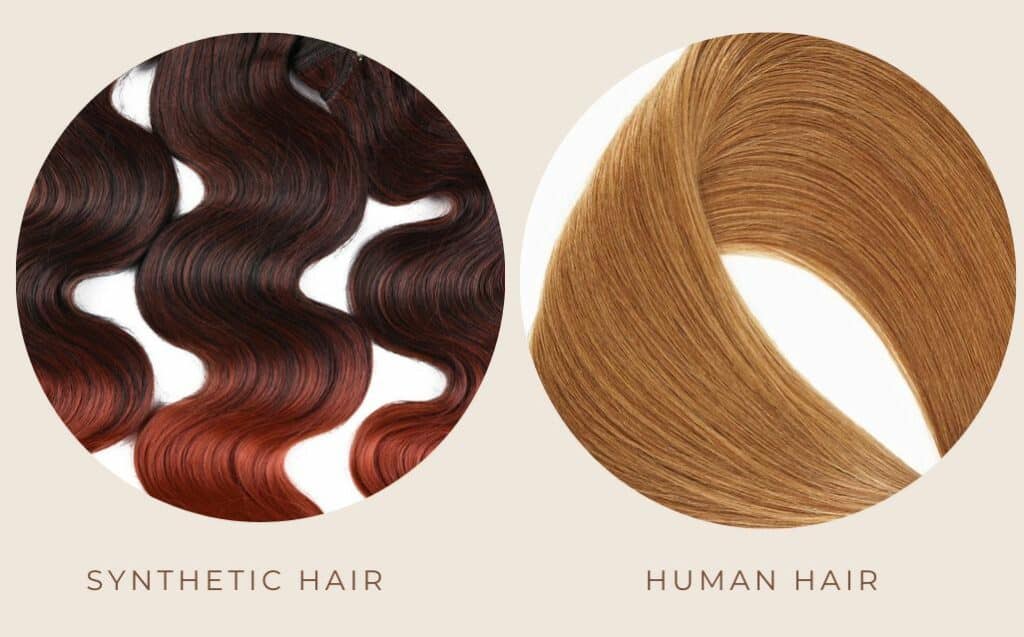
Although synthetic hair is considered more affordable and with endless color options, human hair is more natural-looking with different texture options and a more extensive lifespan. Human hair, such as Indian hair, gives you the option of flexibility in your design and styling of the hair replacement system.
European, Indian, and Chinese hair are the three hair types most popularly used for hair systems. Read on below to find out what makes each of these hair types unique.
What is European Hair?
European hair is exactly what the name suggests. It is hair donated or supplied by Europeans who often have healthy hair. The name reflects the origin of the hair used in the specific hair replacement system.
European hair is typically cut in one direction from the top to root, allowing the hair to keep its natural direction. The highest quality European hair is virgin European hair, which is free of any chemical treatments or processes. As healthy and durable hair, European hair typically maintains its shine through several washes.
Virgin European hair is 100% unprocessed and is entirely natural. As it is healthier hair, the cuticle layer of virgin European hair remains intact, allowing it to maintain its original texture. Traditionally, virgin European hair is collected from one source, allowing for the most natural look possible.
Just like most Europeans, European hair has its own unique appearance and quirks. You’ll find different degrees of texture, thickness, and softness available. Darker European hair is known for being thicker and more voluminous, while lighter shades of European hair are thinner in nature.
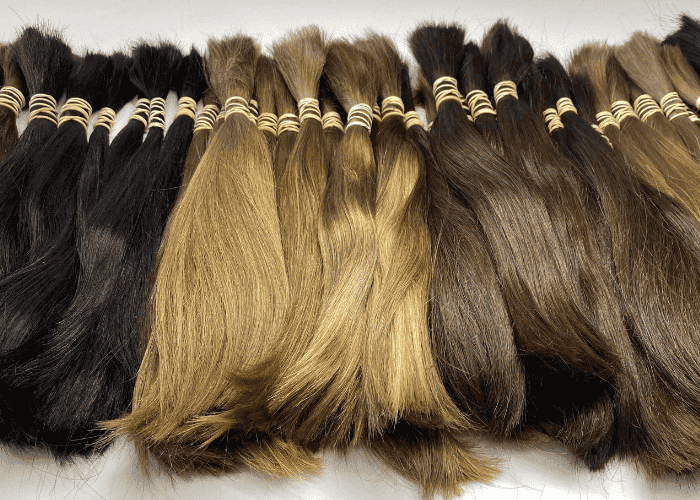
Due to its quality, European hair commands a higher price point. It’s an ideal choice for luxury salons or e-commerce stores with a premium branding. The reasoning behind its more expensive price is that European hair is generally higher quality and more difficult to come by as there are less donors in the UK and Europe than in China or Asia.
As a result, most of the European hair that you find in wigs and hair systems is collected directly from salons themselves. These salons often take the cuttings from European clients to turn into a suitable hair system.
Characteristics of European Hair
The main characteristic of European hair is its softness. It feels like natural hair after conditioning and doing a hair mask. It’s also known for its thin hair texture, making it easier to blend seamlessly with your natural hair.
We love to use European hair for its natural shine, which helps to boost the appearance of your natural hair. If you want a high-quality hair replacement system that will give you the appearance of fuller, healthier hair, European hair is your best friend.
The beauty of European hair is that it does not have to undergo extensive chemical treatment to be used in hair systems. In most cases, it’s available to be used right away due to its higher quality and softer texture, allowing it to blend seamlessly with your natural hair.
Due to its popularity, it’s not uncommon to see salons and extension manufacturers trying to pass off Chinese or Indian hair as being European hair in an attempt to attract customers. With the help of this guide, you should become familiar with the different characteristics of European hair vs. Indian hair.
What is Indian Hair?
Indian hair is sourced from India, including Remy Indian hair and normal Indian hair. Basic Indian hair is one that has been processed with a form of chemical treatment to give the illusion of softer hair with a silky finish. The treatment also creates the illusion of a natural shine in the hair system, which begins to become duller after each wash.
Remy Indian hair is a half-way option between virgin hair and basic options. Unlike basic Indian hair, it undergoes a shorter chemical treatment and is considered healthier and more durable.
Remy Indian hair is cut ‘root-to-tip’, allowing the hair to continue to sit in its growth direction. The set-up of the cuticle layers of wigs using Indian hair means that the customer’s natural hair will blend more authentically with the hair system. What makes remy hair unique is that it typically comes from one donor.
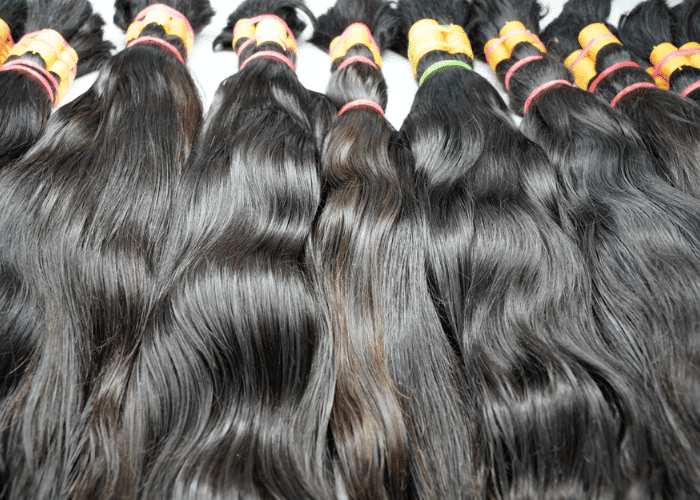
As a long-lasting hair type, Indian hair offers your customers value for money without breaking the bank. It’s a more affordable alternative to European hair, while also being higher quality than Chinse hair.
Indian hair is soft and smooth in texture, making it ideal for hair systems that are made in a darker color. It’s also suitable for hair systems and extensions of all lengths.
If you’re looking for high-quality Indian hair systems, choose Remy Indian hair that uses a double-drawn method. While it’s a more intensive process, double-drawing Remy Indian hair means that it’s free of any split ends and appears healthier and shiner.
Indian hair is known for being an ideal match for customers who have African hair as the two hair textures are virtually the same. This hair type is relatively fuss-free for customers with African hair and is easy to maintain.
Characteristics of Indian Hair
At New Times Hair, there are two forms of Indian hair that we typically use for our hair replacement systems. Normal Indian hair and Remy Indian hair. While they lack the premium quality of virgin European hair, it gives the illusion of similar quality at a more affordable price point.
Indian hair is a popular choice for clients who want to create a hair replacement system that has a silk finish and thinner hair texture. If you’re struggling to choose between European hair vs. Chinese hair, Indian hair serves as the best of both worlds.
Its fineness makes it ideal for using with hair replacement systems, with Remy Indian hair having the same follicle structure as European hair. A selling point of Indian hair is its easy maintenance and manageability.
A bonus of using Indian hair is that it is the ideal choice for hair systems that you or your customer intend to dye a different color. Remy Indian hair can be dyed at home or in your salon without causing damage to the hair system or extensions.
As it represents a higher-quality option compared to Chinese hair and a more affordable option than European hair, Indian hair is one of the most commonly used options in the industry.
What is Chinese Hair?
If you’re looking for the most affordable hair for your extensions or toupee, look no further than Chinese hair. This hair type is naturally thicker and coarser than its European or Indian counterparts. As a result, Chinese hair undergoes extensive chemical treatments to make it wearable as a hair system.
The issue with this more intense chemical processing is that it damages the natural structure and integrity of the hair follicles. By compromising the health of the hair, Chinese hair is considered lower quality than its European and Indian counterparts.

Chinese hair undergoes a chemical treatment that typically uses silicon, which separates from the hair after just a few uses. One advantage of Chinese hair is that it is readily available in larger quantities, making it an ideal choice for customers on a budget.
It is also known for having a darker pigmentation than European hair vs. Indian hair, making it ideal for black wigs or hair systems to create a natural appearance.
If you want to use the affordable option of Chinese hair, without receiving a low-quality product, work with a wholesaler who manufacturers their hair system using genuine hair.
In general, Chinese hair is often avoided for the international market as it doesn’t live up to the quality expected with Indian hair vs. Chinese hair. As it has to be extensively chemically processed, the cuticle o the hair is treated with acid to give it the illusion of a smoother texture.
Characteristics of Chinese Hair
Chinese hair is generally considered to be a second-choice option. Although Indian hair vs. Chinese hair is usually differentiated by the health of the hair, Chinese hair still has something to offer your clients. If you’re looking for the most affordable hair system, Chinese hair should be your go-to option.
Although Chinese hair is characterized as thicker and rigid when you consider Chinese hair vs. Indian hair, you can request a softer and finer texture for your Chinese hair. As a flexible and durable hair type, it’s one of the few options that will work for almost any client.
You can spot the difference between Chinese hair vs Indian hair as Chinese hair lacks the silk texture and natural lustre of its more expensive counterpart. Chinese hair is straighter in texture, while being often twice as thick as European hair. While most Caucasian hair has five cuticle layers, Chinese hair can possess up to 10.
Although Chinese hair typically has fewer strands of hair, this hair is thicker and denser to create the illusion of more voluminous hair. If you choose to use Chinese hair for your hair systems, we recommend suggesting that your customers use a cleansing shampoo and hydrating conditioner, while using a reparative formula if the Chinese hair has been dyed for the purpose of making the wig or hair system.
European hair vs. Indian hair
One of the most noticeable differences between Indian hair vs European hair is the shine that it produces. European hair is naturally healthier, maintains its natural shine through several washes. Basic Indian hair undergoes a chemical treatment to give the illusion of a similar shine, but this will become duller after each wash.
In general, Indian hair lacks the quality of virgin European hair, which is considered the premium choice for hair systems. Both virgin European hair and Remy Indian hair take the hair in a ‘top to root’ direction for a more natural appearance. Unlike virgin European hair, this Remy Indian hair undergoes a small amount of chemical treatment to give it extra durability and a healthier appearance.
One notable similarity between European hair vs. Indian hair is that both tend to have the same thickness. Darker hair will be thicker, while lighter hair shades are traditionally thinner.
As Indian hair goes through more chemical treatment than virgin European hair, it becomes artificially softer and thinner as a result. The chemical treatment gives the hair replacement system the illusion of a silk-like finish.
If you’re searching for the healthiest hair possible for your hair replacement system, European hair is the perfect option. While you’ll pay a higher price tag for European hair, the difference between European hair vs. Indian hair is instantly noticeable.

Indian hair vs. Chinese hair
While Indian hair will undergo some form of treatment before being used in hair systems, Chinese hair goes through a more intense chemical treatment. When we consider Indian hair vs. Chinese hair, it’s worth looking at the basics of both styles.
Chinese hair is known for being coarse and thick, with Indian hair being a thinner alternative that is finer and more flexible. You’ll find natural Indian hair in a wider variety of colors, giving you more options to choose from for healthy, natural hair.
In practical terms, Indian hair vs. Chinese hair gives you more for your investment, with Indian hair having a longer lifespan. If you’re looking for a hair type that offers value for money, Indian hair is the perfect option.
When you’re purchasing Indian hair, it’s worth ensuring that the hair system is 100% Indian hair and that it’s not mixed with Chinese hair. Some manufacturers do this trick to lower the cost of the hair system, while still charging you the full price for Indian hair.
Choosing the Right Hair Type for Your Hair Replacement Systems
Deciding which hair type to opt for isn’t an easy decision. You want to consider the characteristics of each type, as well as the differences between Indian hair vs. Chinese hair.
You want to consider the:
- Density of the hair
- Its flexibility and versatility
- Whether it can be dyed a different color
- Pigmentation of the hair
- The condition of the hair cuticle
- The quality and overall health of the hair
- The texture and smoothness of the hair
- How readily available the hair is
- The price point of the hair type
Each of these characteristics will help you decide which hair type is best for meeting the needs of your customer base. While most businesses start with Chinese hair as an affordable option, European hair is the best option for high-quality salons and services. Indian hair gives you the best of both worlds at an attainable price point.
Are you ready to take your salon or business to the next level with premium human hair systems? New Times Hair is here to help you turn your business goals into a reality. With thousands of hair system distributors across the world, New Times Hair is an industry leader. We have extensive experience in creating long-term hair systems, including wigs, toupees, and hair extensions.
You can find out more about our hair type options by contacting us at info@newtimeshair.com for more information.

